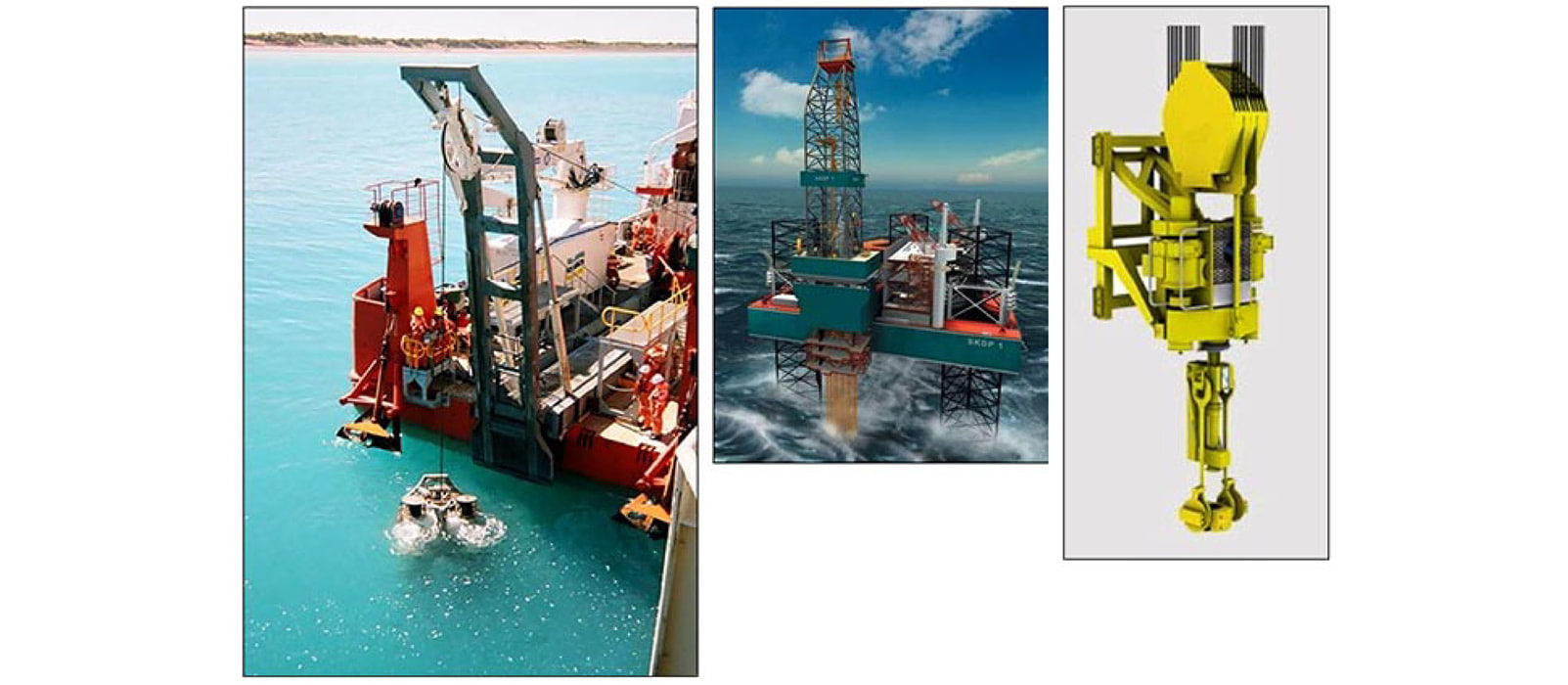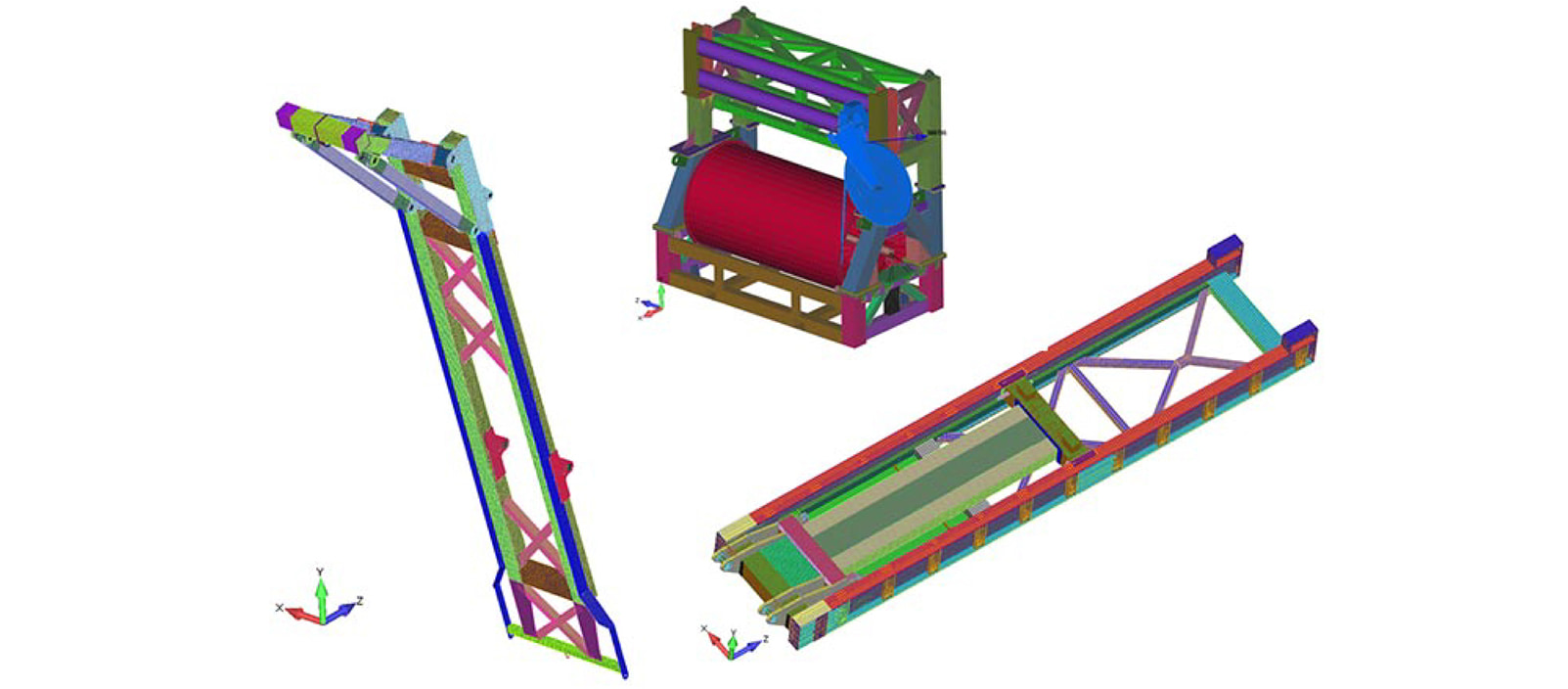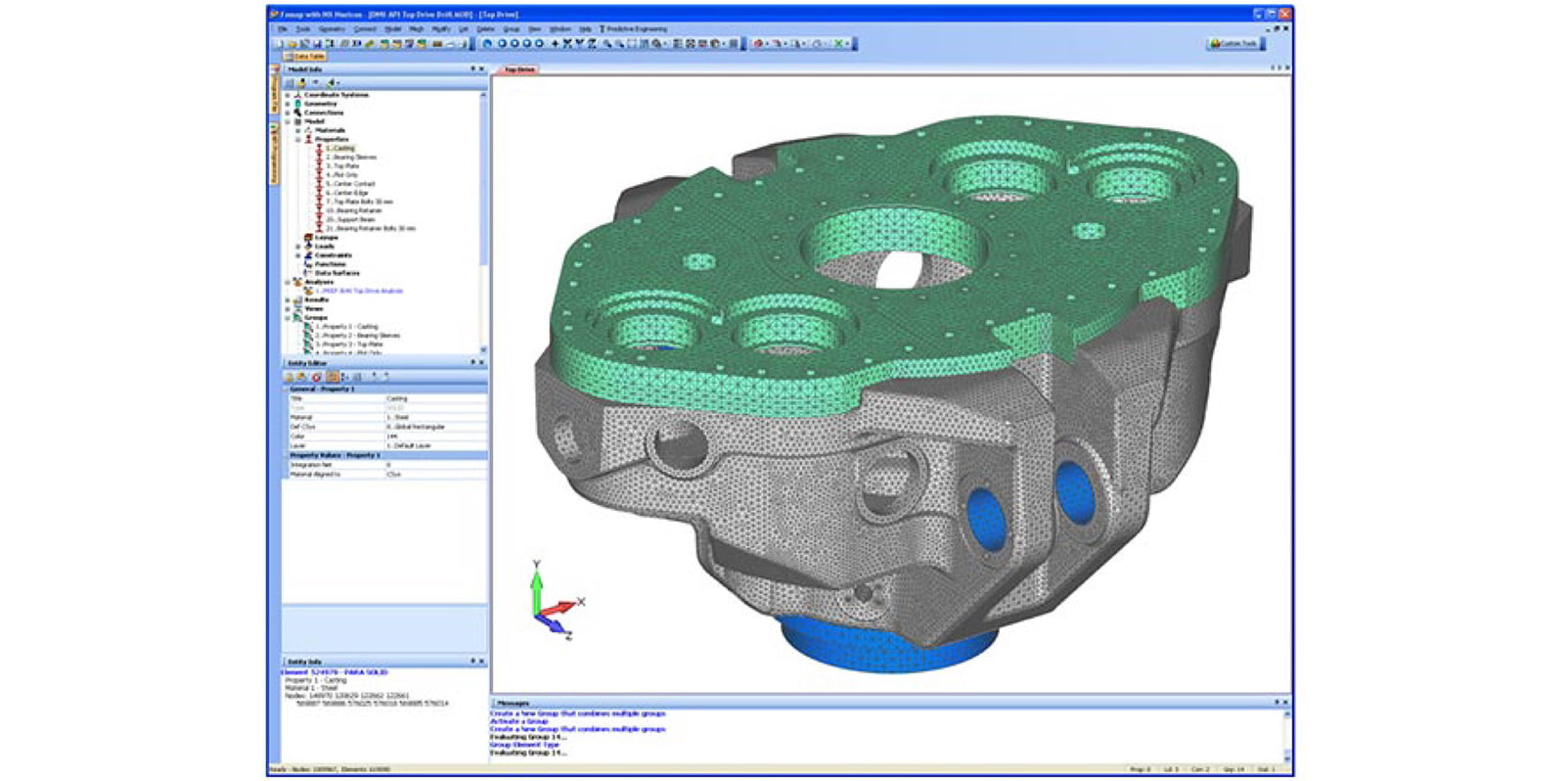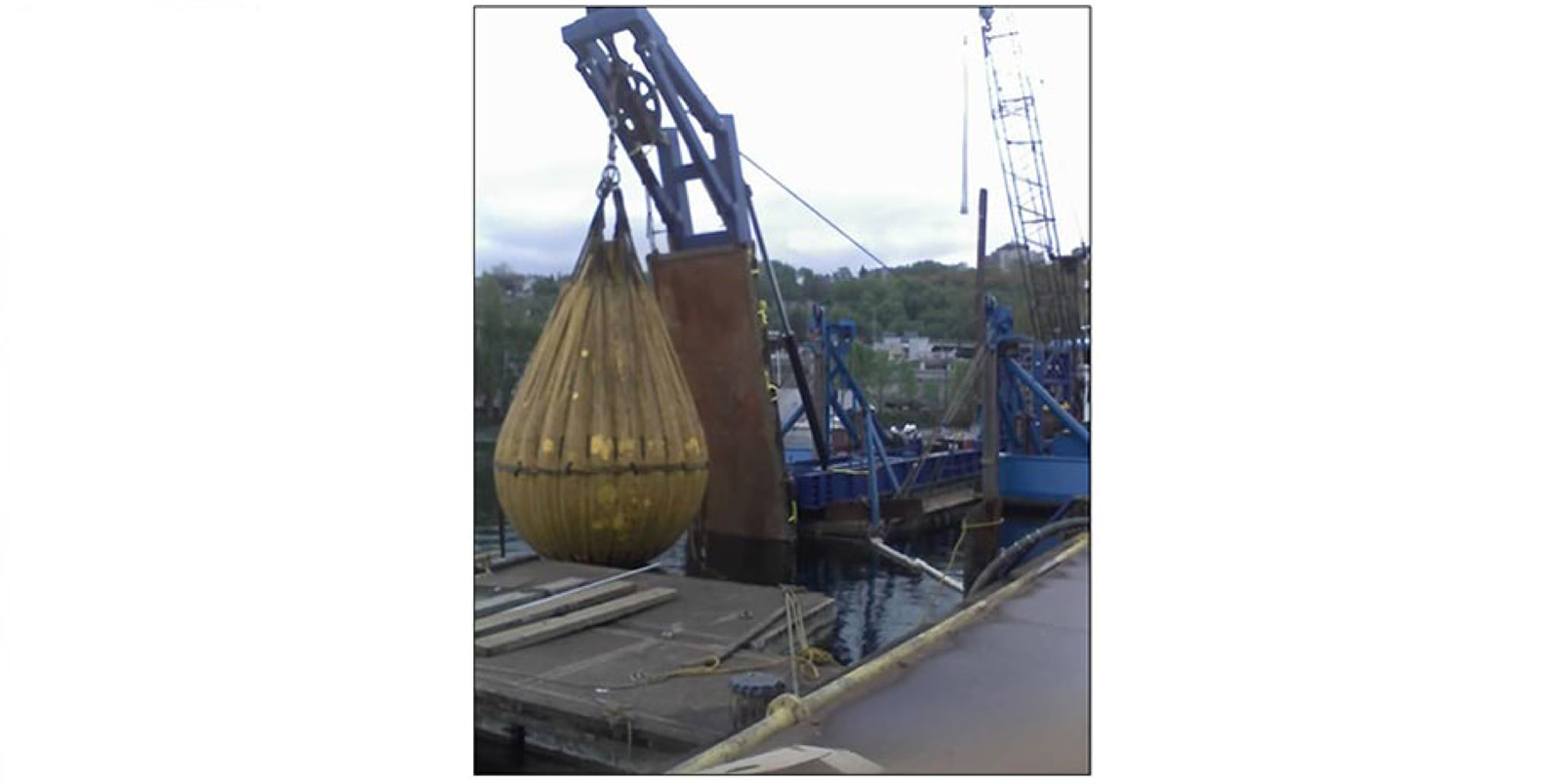Ship Mounted Crane Analysis under DNV Rules
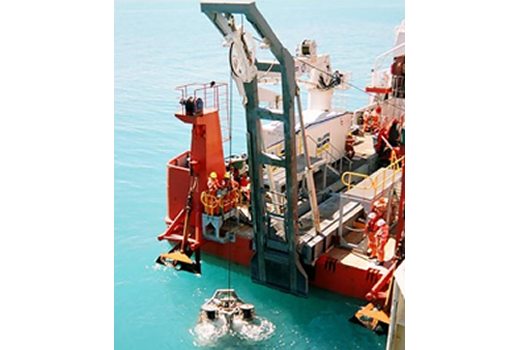
Analysis
Objective
Offshore engineering has grown rapidly in the last few years as the world searches for new resources. Exploring the deep blue requires specialized hardware that can withstand harsh sea conditions and strict safety margins as outlined by Det Norske Veritas (DNV), headquarted in Oslo, Norway (e.g., offshore oil drilling equipment) or by the ship classification society, American Bureau of Shipping (ABS) (e.g., manned submersibles). Predictive Engineering FEA consulting services brings decades of experience in solving such challenging simulation problems.
Two recent projects are discussed that cover the analyses of a ship-mounted crane for the launch and retrieval of a remotely piloted deep sea drill and that for top drive drill assembly used in the north sea oil patch. Both projects provided analysis challenges in understanding the special requirements for rough seas and those imposed by DNV and the American Petroleum Institute (API) for oil field equipment.
Analysis Tool: Both models are assemblies and required the used of beams, rigid links, special DOF spring elements and contact elements (linear contact algorithm) to enforce bolted connections and contacting surfaces. Model size was gigantic with the top drill assembly reaching a million nodes (10-node tetrahedrals). 64-bit NX Nastran was used through out this investigation and was able to generate run times in minutes on the large models.
Model Details: Of course, the FEA models were built using Femap. Geometry was imported from Pro/E and Solidworks and used as the foundation for both models. The geometry for the crane structure was reduced to a surface model and meshed using plate elements. The top drive drill structure was pure solid meshing. Additionally a drawworks and a winch package were modeled for the same company.
Analysis Results: The crane model required about 20 iterations to arrive at the final optimized design whereas the top drill took five major design changes. The top drill model (~3,000,000 DOF) ran in about 8 minutes. As is common, most of the time was spent within the Femap environment pre- and post-processing the results.
Why? Quick turnaround was pivotal to the success of this project. With direct geometry transitions (CAD to FEA) and fast solves, both projects meet their schedules even though there were numerous design iterations. The crane passed its field test with flying colors and the top drill structure is going into production with the full approval of DNV. With the addition of these two projects, Predictive Engineering has now successfully completed over 800 projects in the last 20 plus years.
PDF Download
